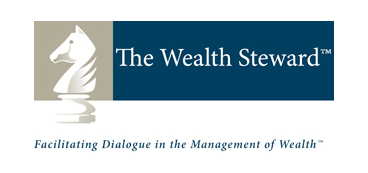By Dan Hallett on November 17, 2011
My last post on the perils of investing in high-payout funds with borrowed money sparked a lot of questions and a bit of confusion around the tax rules and associated risk. In this post, then, I thought it would be helpful to run through a numerical example to illustrate what I wrote about last time.
Illustration Assumptions
For my illustration, I assume that an investor borrows $100,000 at a 4% annual interest rate, billed monthly in arrears. The assumptions used on the investment, a high-payout mutual fund, are as follows:
– Amount Invested: $100,000
– Distribution Policy: Fixed
– Distribution Rate: 12% annually ($1,000 monthly in this case) paid at month-end
– Distributions’ Tax Classification: 100% return of capital (RoC)
– % of Distribution taken in cash: 100%
– Total Fund Return: 10% annually
– Time Frame: Seven years (roughly the median holding period of the average dollar invested in Canadian mutual funds over the past several years.
– Investor Marginal Tax Rate: 40%
Finally, at the end of each month, the $1,000 distribution was applied to the loan (first applied to interest, with any excess reducing the principal outstanding.
Impact on interest deductibility
Many readers were confused by how RoC cash distributions affected the allowable interest deduction. So here is how deductibility is impacted by the above-noted strategy.
Month 1 – The $100,000 loan proceeds were used to invest in an equity fund fitting the description in the above table. The fund paid a $1,000 distribution at the end of each month. This distribution is paid out in cash. Loan rate is 4% annually.
Interest in first month is $333.33 (0.04/12 x $100,000 = $333.33). This $333.33 is fully deductible for tax purposes.
The first $1,000 distribution is paid at month end – made up entirely of RoC – covers all of the first month’s interest, plus $666.67 of loan principal. Outstanding loan principal is now $99,333.33 ($100,000 – $666.67).
Month 2 – Interest in second month is $331.11 (0.04/12 x $99,333.33). But not all of this is deductible for tax purposes. The percentage of this month’s interest that is tax-deductible falls from 100% to 99% (1 – $1,000 / $100,000 = 99%); and total dollar interest that can be deducted is $327.80 (0.99 x $331.11).
The second $1,000 distribution – again paid at month end and made up entirely of RoC – covers all of the interest, plus $668.89 of principal, leaving $98,664.44 outstanding on the loan.
Month 3 – Interest in third month is $328.88 (0.04/12 x $98,664.44). But recall that last month deductibility fell from 100% to 99% of total interest – that’s our starting point for this month.
But since we used another monthly RoC cash payment to pay the loan, we move from 99% deductibility to 97.99% deductible (i.e. 0.99 – $1,000 / $99,333.33 = 0.9799 or 97.99%). For this month, $322.28 is deductible (0.9799 x $328.88).
The third $1,000 monthly distribution covers all of the interest, plus $671.12 of principal, leaving $97,993.33 outstanding; and so on.
Each month is a small proportion of each month’s interest cost ceases to be deductible. This chart shows how the deductibility declines over time.
By the end of year one, you’re down to about 88% deductible in this example. By the 3.5 year mark, only half of the interest expense is deductible. Over a seven year period you’d be able to deduct $11,743 of the $18,526 in interest charges – but in every case like this I’ve seen, people are advised to deduct the full $18,526 paid. That’s nearly $6,800 of over-deductions claimed, which could easily make this big enough to grab CRA’s attention (in part because most leverage investments I’ve seen are well in excess of $100k).
After-Tax Outcome
At the end of seven years, our hypothetical high-payout fund is worth $79,842 (after distributing $84,000 in cash). If the investment is liquidated to fully pay the loan principal, the investor would owe $12,768 in capital gains taxes. That would make the after-tax investment value $67,073. After paying off the $35,497 loan principal and counting the benefits of the interest tax deductions, the net after-tax benefit of this strategy amounted to just over $36,000. That’s not bad after seven years. But it’s a dream scenario with high returns, no bear markets and low borrowing costs.
If we use more current figures – i.e. a 3.5% annualized borrowing cost (prime + 0.5%), a 10% distribution rate and a 6.2% net return – the same $100,000 borrowed to invest in this high payout fund nets the investor just $15,000 after seven years – a present value equivalent of a little over 1.5% annually of the original amount at risk. And that’s still without a bear market and no increases in loan rates – either of which could easily tip this strategy into the red.
This is the kind of analysis that should accompany such leverage recommendation to ensure that both advisor and investor are fully aware of the associated risks and rewards.
[NOTE: In the original version of this blog, a larger and erroneous figure was shown for capital gains taxes. This and all other affected figures have been corrected.]
- Piling into U.S. stocks? Don’t Expect the Past Decade to Repeat - January 15, 2025
- The S&P 500’s Three Surprising Traits - November 6, 2024
- Savvy DIY Investors Must Plan For Succession - September 4, 2024



